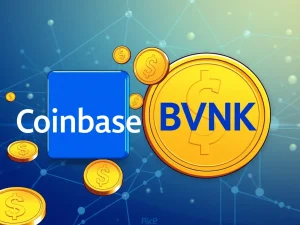Unlock Potential: How Social Crypto Payments Drive Mainstream Adoption

Imagine sending value as easily and instantly as sharing a meme or tagging a friend online. This vision is at the heart of discussions around the future of crypto payments. While blockchain technology promises borderless, low-fee transactions, its widespread adoption for everyday use remains a challenge. Experts are now exploring how integrating payments into familiar social experiences can unlock this potential, making crypto transactions not just possible, but preferred.
Why Isn’t Mainstream Crypto Adoption Here Yet?
Despite years of development, using cryptocurrencies for daily purchases, like buying a coffee, isn’t yet common. As Gareth Jenkinson of Crypto News Insights notes, while solutions like Mastercard-linked crypto cards exist, they often act as intermediaries rather than true direct crypto-to-merchant payments. The core question remains: what’s holding back widespread mainstream crypto adoption?
The consensus points to a gap between the technical capabilities of blockchain and the user experience needed for the general public. Traditional payment systems are deeply ingrained and simple. Crypto needs to match or exceed this ease of use to compete effectively.
The Power of Social Payments in Web3
Enter the concept of social payments. Stefana Banciu, Growth Lead at Pulsar Money, highlights how their platform is tackling this challenge by enabling users to send crypto directly through social media platforms like X (formerly Twitter). By simply tagging a handle, users can initiate a transfer.
This approach transforms a potentially complex transaction into a familiar social interaction. Banciu explains, “You can actually have super seamless, easy and convenient payments.” This small step bridges the gap between digital communication and financial transactions, making crypto feel less like banking and more like interacting online.
Making Web3 Payments Fun and Accessible
Beyond just convenience, Banciu stresses the importance of making Web3 payments enjoyable. For many in the crypto space, the initial draw wasn’t just payments, which can seem mundane. To onboard the next wave of users, the experience needs to be intuitive, social, and even entertaining.
Pulsar’s focus on social payments is partly driven by this idea. “We said, OK, why not think of a way to onboard users, make them do payments in a fun way?” Banciu says. Integrating payments into social feeds leverages existing user behavior and makes the process feel less intimidating and more engaging.
The Path to Widespread Crypto Adoption
Ultimately, the goal is to establish cryptocurrencies as a legitimate “medium of exchange.” Jenkinson points out that without this function, crypto fails to fulfill one of the fundamental characteristics of money. Achieving this requires overcoming current hurdles:
- Complexity: Simplifying wallets, keys, and transaction processes.
- Volatility: Addressing price swings that make everyday pricing difficult (though stablecoins offer a solution here).
- User Experience: Making the act of paying as easy as ‘tap-and-go’.
- Integration: Building crypto payment options into places people already interact, like social media.
Innovations like social payments are crucial steps on this path. By making crypto adoption feel less like a technical leap and more like a natural extension of online activity, platforms like Pulsar are paving the way for a future where paying with crypto is as common and simple as sending a direct message.
This conversation, explored in depth on The Clear Crypto Podcast featuring experts from StarkWare, Crypto News Insights, and Pulsar Money, underscores a critical phase in crypto’s evolution: moving from speculation and complex technology to practical, user-friendly applications that can serve everyone. The future of payments might just be social.







